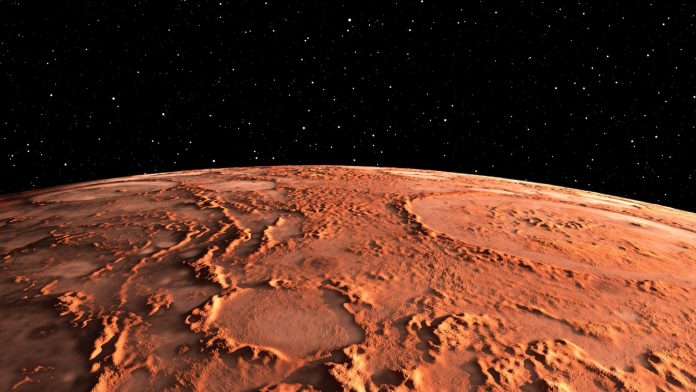Will Future Martians Be Green-Skinned? The Shocking Reality of Mars Colonization!
Imagine a world where the offspring of Martian settlers are sporting green skin and have weak bones. Sounds like something out of a sci-fi movie, right? Yet, this could be a possible outcome of Elon Musk’s ambitious plan to create human cities on Mars. Experts are raising alarms about the potential mutations and drastic health changes that could arise for humans living on the Red Planet. Buckle up, because we’re diving deep into what it means to be a Martian!
The Dream of Colonizing Mars: Musk’s Vision
Elon Musk, the tech visionary behind SpaceX, has made it clear that he plans for humans to inhabit Mars. His bold statement speaks of turning us into a "multi-planet species" and establishing self-sustaining cities within a couple of decades. But what are the implications of this vision? Colonizing Mars isn’t just about getting there; it’s about surviving and thriving in an environment radically different from Earth.
In his own words, Musk shared on X (formerly Twitter), "These will be uncrewed to test the reliability of landing intact on Mars." This science fiction-ready plan gives a glimpse into a future where humans may have to fight for their survival amongst the stars.
The Brutal Reality of Life on Mars
Dr. Scott Solomon, a biologist from Rice University, paints a grim picture of the challenges settlers would face on Mars. He explains that the extreme living conditions could lead to significant evolutionary changes, particularly for children born there. Imagine these children growing up with brittle bones and potential blindness due to the harsh environment!
Dr. Solomon vividly describes this in his book, arguing that as Martian settlers evolve, their skin color could change radically in response to exposure to Mars’ environmental extremes. Yes, we might even see “green Martians” walking around!
Understanding the Effects of Low Gravity and High Radiation
Why would Martians evolve in such dramatic ways? Let’s break it down. Mars is significantly smaller than Earth and has only about 38% of our gravity. This reduced gravity means that human bones and muscles would weaken over time. Not only that, but Mars lacks a protective ozone layer—a shield which Earth’s atmosphere provides against harmful UV rays and cosmic radiation.
With such exposure, the DNA of Martian dwellers would face increased mutation rates. Dr. Solomon argues that this might necessitate darker skin tones as a protective measure against radiation, potentially resulting in skin colors beyond our current spectrum. Just think about that: our future cousins on Mars may look completely different from us!
Childbearing Challenges in a Martian Environment
One particularly concerning aspect of this Martian mutation saga is childbirth. With weaker bones and an altered bodily structure, women might face significant risks during delivery. Dr. Solomon mentions the unfortunate possibility of pelvic fractures, highlighting just how unprepared humans might be for life on this alien terrain.
If we consider other studies, researchers like Eneko Axpe and Eric Appel suggest that astronauts heading to Mars may develop Osteoporosis—a disease known for making bones fragile and prone to fractures. This is no trivial concern; astronauts could end up in dire situations if they face physical challenges during childbirth or even daily tasks.
The Psychological Strain of Space Living
Aside from physical risks, let’s not forget about the psychological aspects—after all, living on Mars would be a far cry from the comforts of Earth. Long isolation in small enclaves could lead to depression and anxiety, further complicating everyday life in a Martian colony.
Moreover, with limited space, future Martians may develop a reliance on close-range vision, mirroring how cave-dwelling fish have evolved to be blind due to their dark surroundings. Would our eyes adapt in a similar fashion, promoting nearsightedness in a new generation of Martians?
Can We Overcome These Challenges?
NASA is aware of these potential challenges and conducts extensive research to minimize the risks of prolonged space travel. They are currently exploring solutions for maintaining bone density and muscle health in astronauts through rigorous exercise regimens. However, will these efforts be enough for the next generation on Mars?
This thought-provoking scenario raises many questions. Will we adapt or mutate? Can we address the health crises that may arise from colonizing a new planet?
In Conclusion: Embracing the Future of Mars Colonization
While the dream of establishing a human presence on Mars is thrilling, it’s clear that the journey will be fraught with challenges we haven’t fully comprehended yet. Dr. Solomon’s insights remind us that as we venture into this unknown, we may not simply be relocating; we might be creating an entirely new species.
The question isn’t just about whether we can colonize Mars but also about whether we should—and what we might lose in that process. So, as we look to the stars and dream of Martian cities, let’s also consider what that means for humanity as a whole. Will future Martians be green-skinned with weak bones? Only time will tell, but it sure is an adventure worth contemplating!

